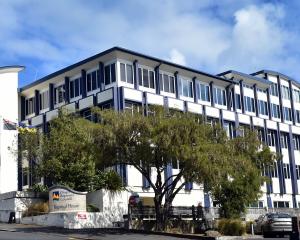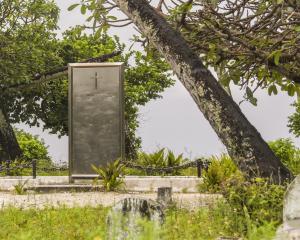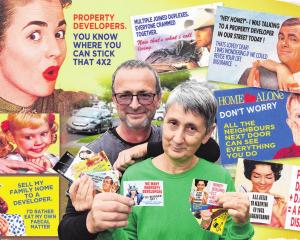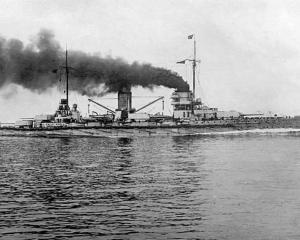The Dunedin City Council is right to take a break and rethink the South Dunedin cycle network, writes Dunedin cyclist and motorist Peter Dowden.
Plans as they stand for the Dunedin City Council's South Dunedin cycle network would not meet the high standard achieved with progress so far.
The wide, smooth asphalt along Royal Cres, on one side of the former four-lane section of Portobello Rd and along Shore St is of the highest cycleway standard: here the council has played its best card first.
Converting these old rail routes, the network of the former Dunedin, Peninsula and Ocean Beach Railway Co, was a stroke of genius, and South Dunedin's own little ''rail trail'' might prove every bit as popular as its gravelled Central Otago cousin.
But fully segregated cycleways are only one of the types of route in the council's planned network.
Other parts of the network seem less destined for success.
They include plans to entice cyclists on to existing pedestrian footpaths of unremarkable width, and more of those infamous cycle painted lanes along South Dunedin's busiest routes, Forbury, Hillside and Macandrew Rds.
Painting lanes directing bikes to the door-opening zone of busy urban arterial roads has been widely discredited and it is alarming that the council would even consider creating any more of these death traps.
Forbury and Hillside Rds have only in recent years had painted median strips added to them, which allow cyclists to occupy traffic lanes fairly safely while being overtaken by motorists using the median.
The medians have also proved ideal for ambulances from St John's new Hillside depot.
Painted cycle lanes create another lethal situation, such as in North Rd, Northeast Valley, where right-turning motorists block those behind them, who then swerve left into the path of cyclists.
The other questionable route the council is taking is to simply declare some existing street footpaths to be ''shared'' with cyclists, in some cases without even planning to add any extra width.
Shared footpaths also put cyclists into a door-opening zone, this time on the left side of cars, the side where motorists seat their youngest children, who are less inclined to look for bikes before flinging their doors open.
They also place cyclists in the path of vehicles reversing suddenly from driveways and garages, with potential for cyclists at the last moment to swerve into pedestrians or off the kerb altogether into the path of traffic.
The most contentious shared footpath proposal, along a narrow bit of Victoria Rd, could easily be replaced with a cycleway along Kennedy and Albert Sts, which would bring the route much closer to St Clair School.
The other technique for creating cycling routes is the so-called ''quiet street''.
Perhaps this is the oldest type of cycling route of all: I still recall being told by my parents to ''stick to the quiet streets'' whenever I set off for a bike adventure.
A proposed route links Auld, Marlow, Tedder, Fingall, Broughton and Waverley Sts into a ''quiet street'' route. These South Dunedin back roads are tranquil, the locals cheerily wave to Lycra-clad passers-by and the vernacular architecture is a delight.
One day the heritage nature of South Dunedin will be more fully appreciated and this cycle route could even become a tourist attraction.
The worst of the council's planned routes, the painted lanes on Forbury, Macandrew and Hillside Rds, all have viable ''quiet street'' alternatives.
Surrey St is a very pleasant, unbusy, leafy avenue, which runs parallel to Forbury Rd for most of its length.
The proposed Hillside Rd lanes could be replaced by another ''quiet street'' route from King Edward St via Carey St, thence via a skinny lane linking Glasgow and Fox Sts, Joyce Ave, Bathgate St and Millington St and, here's my favourite bit, up a new ramp over the Donaghy's rope factory roof then down on to Bathgate Park.
South Dunedin would thereby gain its first hill, a geographical feature it lacks at the moment, which would no doubt provide welcome relief for skateboarders as well as cyclists.
Schools in South Dunedin are major traffic generators and their land, owned by the Ministry of Education for public benefit, attracts no rates revenue: two good reasons why their surplus land should be considered fair game for cycle routes.
Macandrew Rd's proposed painted cycle lanes could easily be replaced by a route over a Queen's High School service lane, through Tonga Park, alongside King's High School playing fields then through a ministry-owned residential section at 31 Kirkcaldy St to follow Melbourne St to the South Dunedin shops.
Existing school paths on either side of Bathgate Park School could link Macandrew Rd to Bay View Rd to benefit the cycling and walking public.
Setting Dunedin's residents, cyclists and motorists at each other's throats is no way to arrive at a consensus for a South Dunedin cycling network.
The council needs to apply a little more imagination to find a way through.











